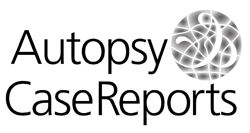Are pathologists becoming mere technicians?
Larry Nichols
How many hours each workday do you spend interacting with a computer screen instead of a person? As a pathologist, if you are signing out digital slides, flow cytometry or molecular diagnostic tests, interacting with a computer screen instead of a human being probably takes up most of your workday. Looking at glass slides is also usually without interpersonal interaction. Now ask yourself: of the diseases you are diagnosing, how much knowledge of their clinical manifestations (such as signs and symptoms) are you using to diagnose them? You do need years of training in morphology and the technical aspects of pathology to make the diagnoses that you make. The technical knowledge that you need of immunohistochemical, flow cytometric and other types of patterns continues to grow by leaps and bounds. For example, years ago, a lung biopsy showing adenocarcinoma would be signed out using only routine hematoxylin and eosin (H&E) staining, but now it increasingly requires immunostaining to confirm that it is lung primary and molecular testing for mutations conferring sensitivity to targeted therapy.
Pathology journals are filled with pattern recognition technical information. Routine H&E morphology is a rapidly decreasing part of most pathology journal articles, and often it is absent altogether. Gross pathology is rarely discussed and the working knowledge of it required for surgical pathology specimen processing has largely passed from pathologists to pathology assistants. Pathologists’ knowledge of how the gross and microscopic pathology relate to the signs, symptoms and other clinical manifestations of diseases is fading. Under relentless pressure to simply make more diagnoses and the necessity of escalating technical knowledge to make those diagnoses, pathologists are increasingly becoming pattern recognition specialists, and are losing touch with most of the clinical aspects of the diseases they are diagnosing.
As pathologists retreat into their laboratories with their computers to make diagnoses without reference to the clinical manifestations of the diseases they diagnose, they become technicians. They remain highly trained experts, but function as mere technicians, who do not use their knowledge of clinical medicine to do their work. Under these circumstances, it is only a matter of time before economic forces drive their replacement by technicians, who do not have training in clinical medicine. Such technicians would be easier to produce, and - no doubt - cheaper to employ. If the diagnoses of non-physician technicians are as correct as those of physician pathologists, why not use them instead?
If the work of pathology making diagnoses is done by non-physician technicians, what might be lost? Clinicopathologic correlation could become a lost art. Technicians without clinical training would not be able to provide explanations of the signs and symptoms of disease. They could not contribute to the collaborative decision-making about treatment at tumor boards. To them, therapy for the diseases they diagnose would be a black box into which they put their diagnosis in one slot and the treatment comes out another slot. Attending tumor board would be a waste of their time and they would most likely prefer to be at their computers making more diagnoses instead.
There is an independent force driving clinicopathologic correlation to extinction. This is the decreasing teaching of gross and microscopic pathology in medical education. As the amount of pharmacology, genetics, biochemistry and other basic sciences that medical students need to learn increases, gross and microscopic pathology (morphology) join gross anatomy and histology as ever decreasing components of medical education. Something has to give. The number of hours in a day, the number of days in a week, and the number of weeks in a year are not increasing. Pathologic diagnosis is becoming a black box for clinicians into which they put their patients’ specimens in one slot and the diagnosis comes out another slot.
Instead of withdrawing into roles of nothing more than back-room morphologist diagnosticians, pathologists can find ways of integrating their diagnoses and knowledge of pathology into patient care and medical education - ways that utilize their knowledge as physicians. Pathologists can make themselves less replaceable by non-physician technicians if they bring their diagnoses to direct encounters with patients (as a team member), to decision-making conferences (e.g. tumor boards), to policy-making meetings (e.g. patient safety committees), to clinicopathologic conferences, to radiologic conferences and to clinical case-based teaching in medical education. For example, pathologists are in a unique position among medical educators to expertly edit a case presentation of lung primary adenocarcinoma to teach how the signs and symptoms relate to the radiology, microscopic pathology, treatment and prognosis. As another example, a pathologist can see the instructional value, the lessons to be learned for diagnosis and for patient care from an autopsy or surgical pathology specimen and can write up a case report in collaboration with the patient’s clinicians. Publishing such case reports is a valuable contribution to patient care and medical education.
The replacement of physician pathologists who can practice the art of clinicopathologic correlation by non-physician technicians who can only make diagnoses may be inevitable. Physician pathologists may be dinosaurs after the giant meteor of scientific knowledge has hit the Earth and small mammal technicians may be inevitably taking over the Earth of pathology. Robots with artificial intelligence may inevitably take over from them.
Publication date:
09/29/2016

